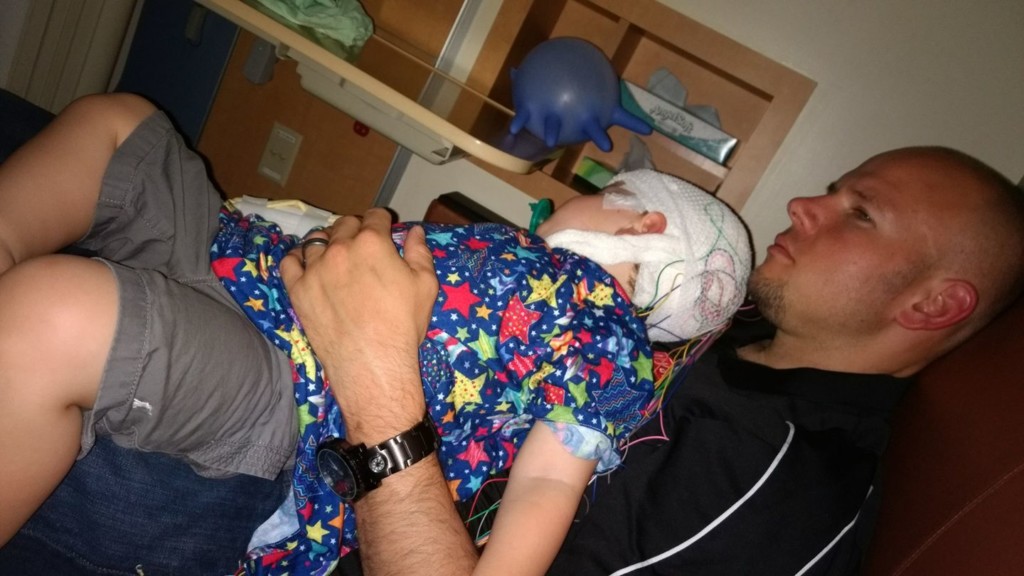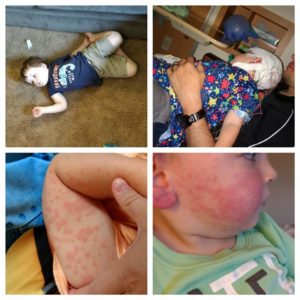
Epilepsy: Three toddlers and one mom’s perspective
There are awful moments in everyone’s life that just stick with you. Moments that when thought about can be replayed in the mind just like watching your favorite emotional Netflix movie. It can be turned on with a click, never changes, but still elicits the same emotional response as the first time. The journey of life and raising children will be filled with these awful moments – hopefully infrequently.
What I would give for infrequent!
My family’s story is anything but having occasional awful moments. We rolled with the punches through two miscarriages, pregnancy complications (hyperemesis, gallbladder removal, and heart issues), post-partum depression, surgeries of all three children before nine months of age, and plenty of other random not normal health-related items. However, we met our match:
Epilepsy
“Epilepsy is a neurological condition which affects the nervous system. Epilepsy is also known as a seizure disorder. It is usually diagnosed after a person has had at least two seizures (or after one seizure with a high risk for more) that were not caused by some known medical condition. Seizures seen in epilepsy are caused by disturbances in the electrical activity of the brain.” (Epilepsy Foundation)
Up until November 2015, all the crazy medical things – even if they happened to our kids – were finite. We knew that they would eventually end. That is not the case for epilepsy. There are no guarantees. There is only hope.
Here are some general facts about epilepsy from the Epilepsy Foundation. Click here for more facts and information.
- “More people live with epilepsy than autism spectrum disorders, Parkinson’s disease, multiple sclerosis, and cerebral palsy – combined.”
- Epilepsy is not contagious or rare. It cannot be cured.
- You CAN die from epilepsy.
- 30-40% of people with epilepsy do not respond to medicine.
- 2/3 of children outgrow epilepsy.
Our Journey
Our epilepsy journey started when our oldest son, Ian (5) was diagnosed with epilepsy on November 24th, 2015. It was truly one of those moments that define our family’s life. There is the before epilepsy and then the after. Over the last three years, our family has been on a never-ending journey in the world of seizures and not being considered “normal.” Kayden was diagnosed in April 2017, and Sydney was diagnosed in March 2018. I nicknamed my kids the Purple Trio since purple (really lavender) is the color for epilepsy.
As a parent who became my children’s caretaker, I was thrust into the realm of being so much more than just a parent. There are medicine schedules, doctors appointments, developmental regressions, side effects to medicine, blood tests to make sure you aren’t killing organs, being an advocate for my children, and fighting with our current health care and educational systems. There are no words that can adequately describe the exhausting task and emotional toll of being your child’s caretaker. The amount of physical, mental, and emotional stress is unbearable, yet I function because I have no other option.

Upper left: EEG
Bottom is what is now suspected to be an atypical Steven Johnson Syndrome rash.
Of all of my children, my son Kayden’s journey has been the most difficult. He has officially been diagnosed with intractable (drug-resistant) epilepsy. He is officially on his last drug (that I will allow because another could leave him impotent and unable to produce bone marrow). He has failed FIVE other drugs. The image of him in his car seat on 4/27/17 will forever haunt me. No mother should ever have to look at their child and wonder if they are dead. No mother should have to check their child for breathing or a pulse or perform CPR multiple times on their own child.
This is my ‘normal,’ yet there is true beauty in the garbage that is epilepsy.
It is hard to describe what it feels like to watch your child have a seizure. You physically see the horror in their eyes right before they have one. The look of pure panic because they know regardless of age that something is very, very wrong. Then they start seizing, and for our family, I watch as their color changes from normal to blue to translucent. If you have ever seen someone who recently died before the funeral makeup, you will know what I mean. It’s like watching in horrible agonizing slow motion your child’s life drain from them.
You hope it stops and your child is alive with or without damage. Because to you the parent, all you want is your child. You want one more story or song or hug or bath or game of tag. You wonder if you said yes to enough time with them. You think of the last thing you said to them. You ponder if your child knows how much you love them. You think of all the hopes and dreams you have for them, and YOU PRAY for a little more time.
Seizures are a constant reminder of the little time I have with my children, and that I have zero control over epilepsy. I cannot control the side effects to medicine like hair falling out, aggression, regression, or blistering skin rash. I cannot control whether my photosensitive epileptic will ever be able to trick-or-treat safely, drive around to see Christmas lights, participate in a fire drill, or visit the dinosaur exhibit at the Children’s Museum. I cannot control whether they will ever be able to drive or attend college by themselves. I cannot control when the next seizure will happen, or if epilepsy will claim the life of one of my children.
What I can control is how much time, energy, and love I give to my children in between them.
Disclaimer: The facts and statistics about epilepsy come from the Epilepsy Foundation with their permission.








